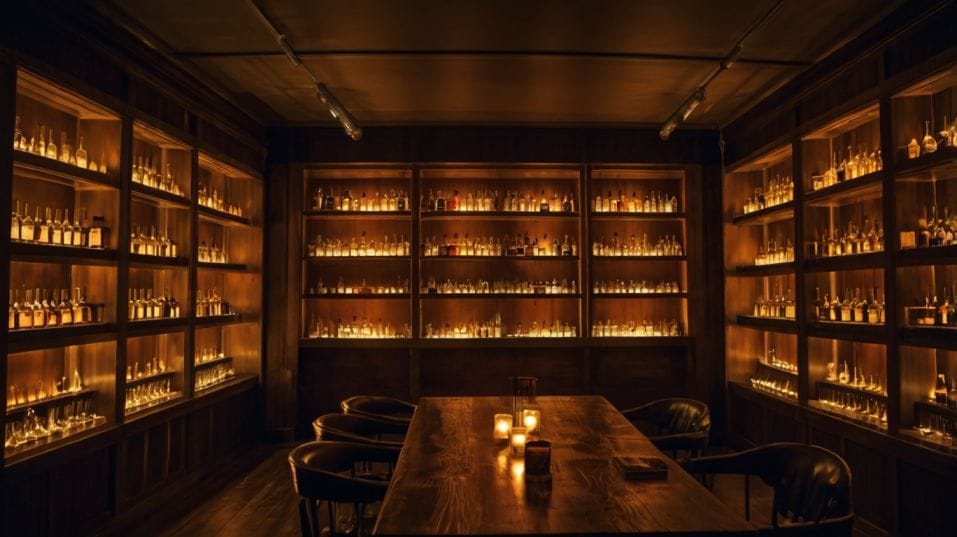Comparing Whiskey Laws by Country
Whiskey laws shape flavor, value, and identity. Learn how global rules influence what’s in your glass—and how to taste with confidence.

Ever wondered why a whiskey from Kentucky tastes nothing like one from Kyoto or Campbeltown? It’s not just tradition—it’s law. Whiskey regulations quietly shape the flavor, character, and trustworthiness of every bottle you buy.
For anyone starting their whiskey journey, these rules matter more than brand names. They reveal what’s inside the bottle, how it got there, and why it tastes the way it does. Master the laws, and you’ll master your palate.
United States: Rule-Bending Craft Meets Rule-Bound Bourbon
American whiskey laws are a contradiction—rigid where tradition demands it, open-ended where experimentation thrives.
Bourbon Law Breakdown
To legally be called bourbon, a whiskey must meet specific requirements:
- Made in the U.S.
- At least 51% corn in the mash bill
- Distilled to no more than 160 proof (80% ABV)
- Entered into a new, charred oak barrel at no more than 125 proof
- Bottled at no less than 80 proof (40% ABV)
- No additives beyond water
These aren’t just technicalities. They produce a whiskey that leans sweet, rich, and full-bodied—often with caramel, vanilla, and toasted oak dominating. The fresh charred oak barrels are the key: they fast-track intense flavor extraction.
Add in a hot, variable American climate, and whiskey here matures quickly compared to older-world styles.

But that “fast aging” comes with trade-offs. It can mean bold but undeveloped flavors, especially in younger releases.
That’s why reading labels matters—terms like “straight bourbon” mean it’s been aged at least two years (and often more), while “bottled in bond” guarantees four years, made under government supervision.
Outside of bourbon, American rye is also tightly defined—minimum 51% rye grain—but beyond that, U.S. distillers have freedom.
Wheat whiskey, corn whiskey, single malts, blended types—America allows them all, often without many legal constraints. That makes the U.S. the most chaotic and creative whiskey landscape in the world.
It's a double-edged sword: thrilling variety, but a minefield for beginners who don't know what to expect from the label alone.
What to watch for: Understand mash bills. Recognize proof and age as real flavor variables. Learn what the oak is doing. And when you find a distillery that balances creativity with clarity, you’ve struck gold.
Scotland: Precision-Crafted Restraint
Scotland’s whiskey laws are strict—and fiercely protected. They don’t just define Scotch; they defend a national identity.
Legal Foundation of Scotch
Here’s what matters:
- Must be made in Scotland
- Aged for a minimum of three years in oak casks
- Distilled under 94.8% ABV
- No additives except water and caramel coloring
- Bottled at no less than 40% ABV
That’s it. But within those rules lies massive complexity. Scotch is categorized into five types:
- Single Malt: 100% malted barley, one distillery, pot stills only
- Single Grain: Includes other grains, still from one distillery
- Blended Malt: Two or more single malts, no grain whiskey
- Blended Grain: Two or more single grains
- Blended Scotch: Any blend of malt and grain whiskies
The regional identities—Islay, Highlands, Lowlands, Speyside, and Campbeltown—add another layer. These aren’t just marketing terms. They reflect geography, tradition, and climate. Islay is famous for heavy peat and coastal brine.
Speyside tends toward elegant fruit and honeyed malts. Each region crafts a distinct sensory fingerprint, legally tied to its source.
Scotch laws ensure a level playing field. There’s no room to hide behind additives or shortcuts. Distillers succeed by mastering grain selection, fermentation length, still shape, barrel type, and aging time.
These are slow, deliberate variables. If bourbon hits hard and fast, Scotch plays the long game. What to watch for: Age statements actually mean something.
So do regional origins. Focus on learning flavor contrast—peated vs. unpeated, refill barrels vs. first-fill, malt richness vs. grain lightness.
Ireland: Historic Heart, Modern Discipline
Irish whiskey once dominated global markets before war, taxes, and neglect nearly erased it. Its comeback? Rooted in flavor—and reinforced by increasingly strong laws.
Irish Whiskey Standards
Today, Irish whiskey must be:
- Distilled and aged in Ireland
- Matured in wooden casks (typically oak) for a minimum of three years
- Bottled at no less than 40% ABV
- Made from a mash of cereal grains, water, and yeast
- No additives allowed except water and caramel coloring
The real signature of Irish whiskey is triple distillation—a process that removes harsher compounds and produces a spirit that’s light, smooth, and floral.
It’s less about bombastic flavor, more about balance. Even at higher proof, it tends to be softer on the palate. Uniquely Irish is the single pot still style—made from a mix of malted and unmalted barley in copper pot stills.
This method gives the whiskey a rich, creamy mouthfeel with notes of baking spice, orchard fruit, and green tea-like astringency. It's not sweet or smoky. It's savory and elegant.
Ireland’s modern regulations now clearly define pot still, single malt, single grain, and blended whiskey. This wasn’t always the case.
The tightening of legal standards in the last decade has made the country’s whiskey scene not just more transparent—but more globally respected.
What to watch for: Understand the difference between pot still and blended styles. Seek out triple-distilled whiskeys to train your palate in smoothness and balance.
Japan: From Copy to Craft Law
Japanese whiskey built its reputation by quietly imitating Scotch—then outdoing it in precision and style.
But until 2021, Japanese law didn’t even define what “Japanese whiskey” meant. Producers could (and did) import bulk Scotch or Canadian spirit, bottle it locally, and label it Japanese.
The New Japanese Whiskey Standards
That’s changed. New voluntary standards (enforced by industry groups) now define “Japanese whisky” as:
- Fermented, distilled, aged, and bottled in Japan
- Using malted grains, water from Japan
- Aged at least three years in wood
- No added flavorings or colorings
These rules aren’t government mandates—yet. But the best producers follow them to signal integrity. What sets Japanese whiskey apart isn’t what it adds, but what it removes. There’s restraint here.
Elegance. Light oak. Clean fruit. A sense of air and clarity. It’s less a punch to the palate and more a scalpel to your senses.
Distillers focus obsessively on every detail—barrel selection, climate-controlled aging, yeast strain, fermentation time. This isn’t about speed or volume. It’s about engineering balance and layering.
What to watch for: Trust only bottles that disclose production details. Learn to appreciate subtlety—how soft smoke, light umami, and oak spice can speak volumes without yelling.
Canada: Quiet Rulebook, Understated Complexity
Canadian whisky (note the spelling) is often misunderstood—because it’s often misrepresented.
What the Laws Allow
The laws are simple:
- Distilled and aged in Canada
- Aged in small wood barrels for at least three years
- Bottled at no less than 40% ABV
- Flavoring and coloring are allowed—up to 9.09% of the blend
That last rule throws a lot of drinkers. It means that in many cases, Canadian whisky can legally include added wine, sherry, or other spirits.
That doesn’t make it bad—but it does make it inconsistent. The best producers avoid gimmicks and focus on grain character, precision blending, and clean finishes.
Canadian whisky is known for being light-bodied, rye-influenced, and smooth. But dig deeper and you’ll find impressive nuance: layered spice, fresh grain, well-integrated oak.
High-proof options and single cask releases now show just how much depth exists under the “smooth” stereotype.
What to watch for: Look past marketing. Focus on grain bills, distillery transparency, and ABV. When Canada does it right, it’s subtle but seriously rewarding.
Final Thoughts: Taste the Rules
Whiskey laws aren’t just red tape. They shape what’s possible—and what’s probable—in every glass. American whiskey pushes boundaries.
Scotch preserves traditions. Irish whiskey plays with texture and technique. Japanese whiskey aims for quiet perfection. Canadian whisky rewards close attention.
Knowing the rules gives you context. It explains why a Scotch tastes like sea spray and smoke, while a bourbon feels like caramel thunder.
It helps you see value beyond hype and label design. You stop chasing limited editions and start chasing understanding.
So here’s what to do now: Pick two bottles from different countries. Pour them side by side. Taste them with the laws in mind. Learn with your tongue. You don’t need a collection. You need curiosity. Start there—and let the rules guide the way.




